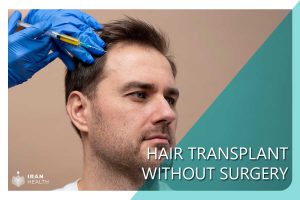A hair transplant is not a cure for hair loss.
A hair transplant is a great way to bring back hair to the spots on your head that have been lost. However, it cannot entirely stop hair loss from happening. The new hair transplanted to your scalp is strong enough to resist the hormone that causes hair loss in men, but your existing hair follicles may still be affected by it. You may need to take medications such as finasteride or minoxidil to keep your hair healthy and prevent further hair loss. Also, depending on the extent of your hair loss, you may need more than one hair transplant session to achieve the desired thickness and coverage.
Hair transplant has different techniques and methods.
There are two main techniques for harvesting hair follicles for transplantation: follicular unit transplantation (FUT) and follicular unit extraction (FUE). In FUT, a strip of scalp skin is removed from the back or side of the head and then divided into smaller grafts containing one to four hair follicles each. In FUE, hair follicles are extracted directly from the scalp using a punch device. Afterward, the grafts are implanted through tiny incisions in the recipient. Both techniques have advantages and disadvantages, such as scarring, recovery time, cost, and graft survival rate. You should consult your surgeon to determine which method is best suited for your case.
Hair transplant requires proper care and maintenance
After the hair transplant, you will need to follow some instructions to ensure the protruding and growth of your transplanted hair. You may experience swelling, bruising, pain, bleeding, or infection in the donor and recipient areas, which will subside with medications and dressings.
You should avoid washing, brushing, or styling your hair for a few days and avoid strenuous activities or sunlight exposure for a few weeks. You should also avoid smoking, drinking alcohol, or taking any blood-thinning medications, as they can impair the healing process and the blood supply to your scalp. You may notice some shedding of the transplanted hair after a few weeks, which is regular and temporary. The new hair will grow after three to four months and reach its entire length and thickness after six to twelve months.
Hair transplant results vary from person to person.
You should know a few things if you’re considering a hair transplant. The success of the procedure depends on things like how much hair you have available for transplant, the skill of your surgeon, and the size and shape of the area where you’ve lost hair. Before getting a hair transplant, you must talk to your surgeon about what to expect from the procedure.
While hair transplants can be a great way to restore hair to areas where it’s been lost, they’re not a quick fix. You may need additional procedures or treatments in the future to keep your results looking promising. Doing your research, talking to a qualified surgeon, and carefully considering the potential benefits and risks before getting a hair transplant are essential. If you’re well-informed and prepared, a hair transplant can be a life-changing solution.
Hair transplant result Gallery
Check out our gallery of hair transplant results to help you make a more informed decision.
Hair transplant before and after pictures
Checklist for a hair transplant consultation:
We have created a handy checklist for our patients who are undergoing hair transplants. Our checklist is designed by a team of expert doctors who specialize in this area. It will help you make sure you are fully prepared for your procedure and know what to expect every step of the way.
Before Hair Transplant:
- Look at before and after photos of the surgeon’s work to see if their results look natural
- Ask about the surgeon’s experience and credentials (how many transplants they have done, whether they are board certified, etc.)
- Discuss which hair transplant technique makes the most sense for your level of baldness (FUT, FUE, etc.)
- Ask if they do the surgery themselves or use technicians
- Get a detailed quote that breaks down exactly what is included
During Consultation:
- Examine your scalp and determine if you are a good candidate
- Evaluate donor hair quality/supply at the back of your scalp
- Discuss hairline design and expected density of new hair growth
- Explain the process step-by-step so you know what to expect
- Provide medication list for before and after surgery
- Answer any questions you may have
Post Surgery Care:
- Provide a timeline for recovery and instructions for wound care
- Explain normal side effects like swelling and itching
- Set expectations for new hair growth timeline
- Provide a list of hair care products to use/avoid
- Schedule follow-up visits to monitor progress
- Be available to answer any other questions during recovery



